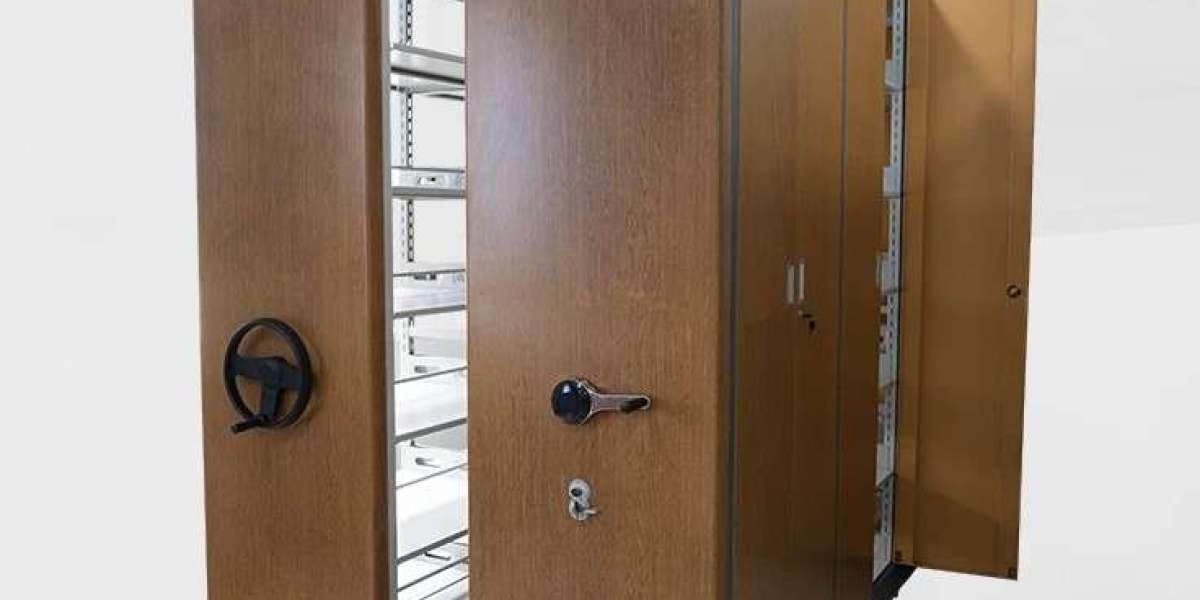The Challenge of Space in Modern Hospitals
Modern hospitals face a unique paradox: they are expanding in functionality while their available space becomes increasingly constrained. The rise of advanced diagnostic tools, digital recordkeeping, and specialized care units all demand more room—yet budgets and building footprints rarely increase at the same pace.
Storage rooms, supply closets, and administrative offices often become overcrowded, disorganized, and inefficient. This inefficiency can lead to:
Lost or misplaced supplies
Wasted time searching for equipment
Increased infection risks due to cluttered spaces
Higher operational costs from disorganization and duplication
This is where Compact Shelvingenters the picture as a transformative solution.
What Is Compact Shelving?
Compact Shelving, sometimes referred to as mobile shelving or high-density shelving, is a storage system designed to maximize usable space by eliminating static aisles. Unlike traditional shelving that remains fixed, compact systems feature shelves mounted on tracks that can slide together when not in use.
When access is needed, users simply open an aisle by moving the shelves apart—either manually, mechanically, or electronically.
This concept may sound simple, but its impact on hospital storage efficiency is profound. By consolidating space and improving organization, hospitals can reclaim up to 50% more storage capacity within the same footprint.
The Evolution of Storage in Healthcare
Historically, hospitals relied on static shelving systems, filing cabinets, and large supply rooms. As patient loads and equipment inventories grew, these traditional methods became unsustainable.
With the shift toward lean healthcare management—a philosophy focused on reducing waste and optimizing workflow—healthcare facilities began to look for smarter solutions.
Compact Shelving emerged as part of this evolution, offering:
Adaptability to various hospital departments
Improved accessibility for staff
Enhanced hygiene and safety features
Compliance with healthcare regulations
Today, compact shelving systems are no longer just an option—they are becoming a necessity for modern healthcare infrastructure.
Key Benefits of Compact Shelving in Hospitals
1. Maximizing Space Efficiency
Hospitals are high-cost environments where every square meter counts. Compact Shelving allows facilities to store more items in less space. Whether it’s medical records, linens, pharmaceuticals, or laboratory materials, compact systems can reduce the physical storage footprint dramatically.
A single compact shelving system can replace multiple static shelving units, freeing up valuable space for patient care areas or new medical technologies.
2. Improving Workflow and Accessibility
Healthcare professionals often operate under intense time pressure. Searching for supplies in a cluttered storage room can waste critical minutes. Compact Shelving systems improve workflow by allowing easy and direct access to stored materials through organized, labeled sections.
Automated or powered compact shelving units further enhance this efficiency, enabling quick aisle opening at the touch of a button.
3. Enhancing Hygiene and Infection Control
In healthcare environments, cleanliness is paramount. Compact Shelving helps maintain sterile conditions by reducing dust accumulation and minimizing cluttered areas where contaminants can build up.
Many systems are made with antimicrobial finishes and materials that comply with healthcare hygiene standards. Additionally, by keeping supplies securely enclosed, compact shelving helps prevent contamination and cross-infection.
4. Securing Sensitive Materials
Hospitals handle a wide range of sensitive materials—from patient files and controlled medications to expensive surgical tools. Compact Shelving systems can be equipped with advanced locking mechanisms, electronic access control, and inventory tracking to ensure that only authorized personnel can access certain sections.
This enhances compliance with regulations such as HIPAA for patient records and DEA requirements for controlled substances.
5. Sustainability and Cost Savings
By optimizing space, hospitals can reduce their need for new construction or expansion—leading to significant cost savings. Compact Shelving systems are also designed for long-term durability and can be reconfigured as needs change, reducing waste and supporting sustainability goals.
Energy-efficient lighting and motion sensors can be integrated into the shelving system, further lowering operational costs.
Applications of Compact Shelving in Hospitals
Compact Shelving can be applied across virtually every department in a healthcare facility. Here are some common use cases:
1. Medical Records Storage
Even with digital transformation, many hospitals still maintain physical records. Compact Shelving allows for dense, organized filing that’s secure and easy to access.
2. Pharmacy and Medication Storage
Compact systems can safely store medications in climate-controlled environments while maintaining strict security and access protocols.
3. Sterile Supply and Equipment Rooms
Operating rooms and ICUs rely on immediate access to sterile supplies. Compact Shelving keeps items organized and protected while reducing the footprint of supply areas.
4. Laboratory Storage
In labs, precision and organization are critical. Compact Shelving can be configured for specimens, reagents, and specialized equipment, ensuring compliance with lab safety standards.
5. Administrative and Archival Storage
Hospitals generate enormous volumes of paperwork and data. Compact Shelving allows administrative departments to store and retrieve information efficiently without occupying valuable office space.
The Role of Technology in Modern Compact Shelving
As technology advances, Compact Shelving systems have become smarter and more intuitive. Modern systems can include:
Electronic touchpad controls for easy operation
RFID tracking to locate specific items instantly
Inventory management integration with hospital ERP systems
Automated safety sensors to prevent accidents
IoT-enabled monitoring for environmental control and security
These technological integrations make Compact Shelving not just a storage solution but a key component of hospital logistics management.
Designing Compact Shelving for Healthcare Environments
When implementing Compact Shelving in hospitals, design and planning are critical. Factors to consider include:
Load capacity and weight distribution for heavy medical equipment
Ease of cleaning and maintenance to meet hygiene standards
Fire safety and accessibility compliance
User ergonomics for healthcare staff convenience
Future scalability to accommodate growth
Collaborating with architects and storage solution specialists ensures that the shelving system aligns perfectly with the hospital’s workflow and safety regulations.
Real-World Impact: Case Study Overview
Hospitals that have adopted Compact Shelving report measurable improvements in efficiency and cost reduction.
For example, a mid-sized urban hospital in the U.S. replaced its traditional storage systems with mobile shelving in its medical records and supply departments. The results included:
45% increase in storage capacity
30% faster retrieval times
20% reduction in wasted space
Improved compliance with recordkeeping regulations
These figures demonstrate that Compact Shelving delivers both operational and financial benefits in real-world settings.
The Future of Healthcare Storage
As healthcare continues to evolve, so will its storage needs. Future innovations in Compact Shelving are expected to include:
AI-driven inventory management for predictive supply replenishment
Smart shelving sensors that track usage patterns
Modular, reconfigurable designs for flexible hospital layouts
Sustainable materials that align with green building standards
Ultimately, Compact Shelving will continue to serve as a cornerstone of hospital efficiency, integrating seamlessly with other smart healthcare systems to create fully optimized environments.
Conclusion
The integration of Compact Shelving in hospitals marks a significant leap toward smarter, safer, and more sustainable healthcare environments. By transforming how supplies, records, and equipment are stored and accessed, compact shelving not only saves space—it saves time, reduces costs, and improves patient care outcomes.
As hospitals continue to embrace innovation and efficiency, Compact Shelving will remain at the heart of this revolution, redefining what it means to manage healthcare storage in the 21st century.













